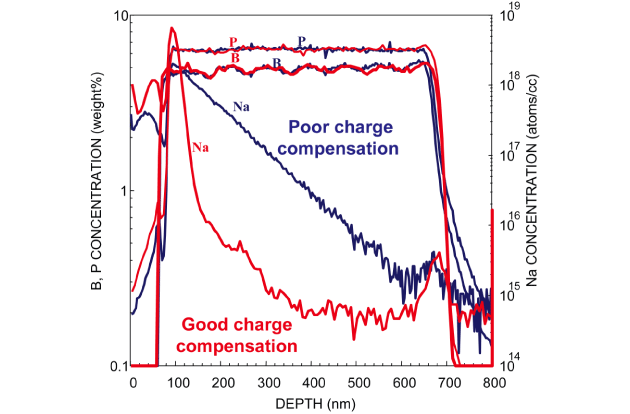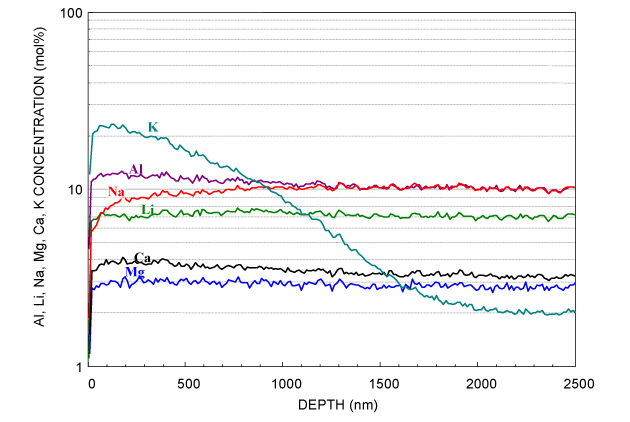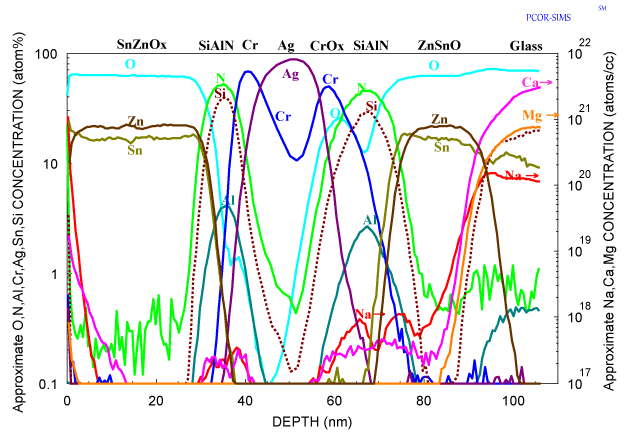Impurity depth direction analysis of various glass materials by SIMS analysis
Home » Impurity depth direction analysis of various glass materials by SIMS
Secondary ion mass spectrometry (SIMS analysis) is used to measure trace impurities in various materials such as semiconductor materials, metal materials, and insulating materials. Insulating materials such as glass are charged up during measurement, making an analysis of insulating materials much more difficult than conducting materials. EAG develops analysis technology for glass materials and provides distinctive services.
Difficulty in analyzing alkali metal elements
SIMS analysis is a technique for obtaining the depth distribution of trace impurities by irradiating the sample surface with oxygen and cesium ions and sputtering. Because the ion beam to be irradiated has a charge, charge-up occurs when an insulating material such as glass is analyzed.

If the SIMS analyzer is charged up during measurement, accurate analysis results cannot be obtained. For this reason, in SIMS analysis, the sample surface is usually irradiated with an electron beam to reduce (correct) charge-up.
If the charge-up correction by electron beam irradiation is insufficient, elements such as sodium (Na) move into the sample due to the electric field induced by the surface charge (electric field-induced diffusion phenomenon), and an accurate depth distribution is obtained. I can’t get it. Figure 1 shows an example of Na concentration analysis in an insulating material (BPSG).
Fig. 1 shows an example of Na depth concentration analysis in insulating material (BPSG). The Red profile is a measurement condition with appropriate charge-up correction The Blue profile is a measurement condition with insufficient charge-up correction
Analysis case study 1: Depth direction analysis of chemically strengthened glass
The performance of chemically strengthened glass is greatly influenced by the concentration of alkali metal elements on the glass surface and the distribution in the depth direction. An analysis example is shown below.
Analysis case study 2: depth analysis of functional glass
The functional glass surface has a thin film multilayer structure. XPS analysis is generally used to analyze the depth direction of the surface thin film of functional glass. EAG has made it possible to perform depth direction analysis even in SIMS analysis. SIMS analysis has better detection sensitivity than XPS analysis, so it is possible to grasp the distribution of trace impurities that could not be detected by XPS analysis.


Would you like to learn more about Impurity depth direction analysis?
Contact us today for your Impurity depth direction analysis needs. Please complete the form below to have an EAG expert contact you.